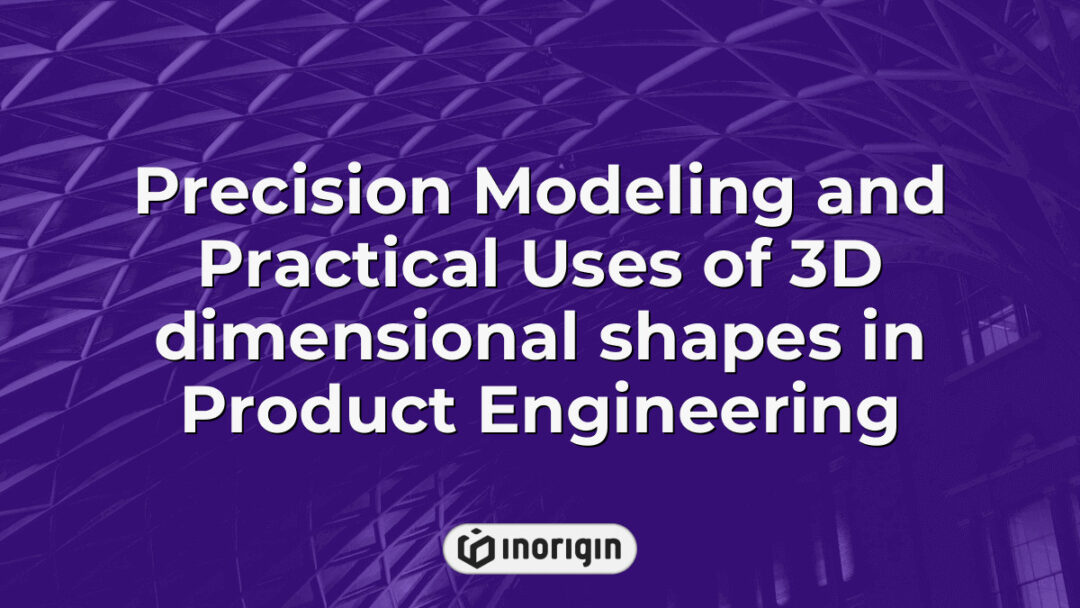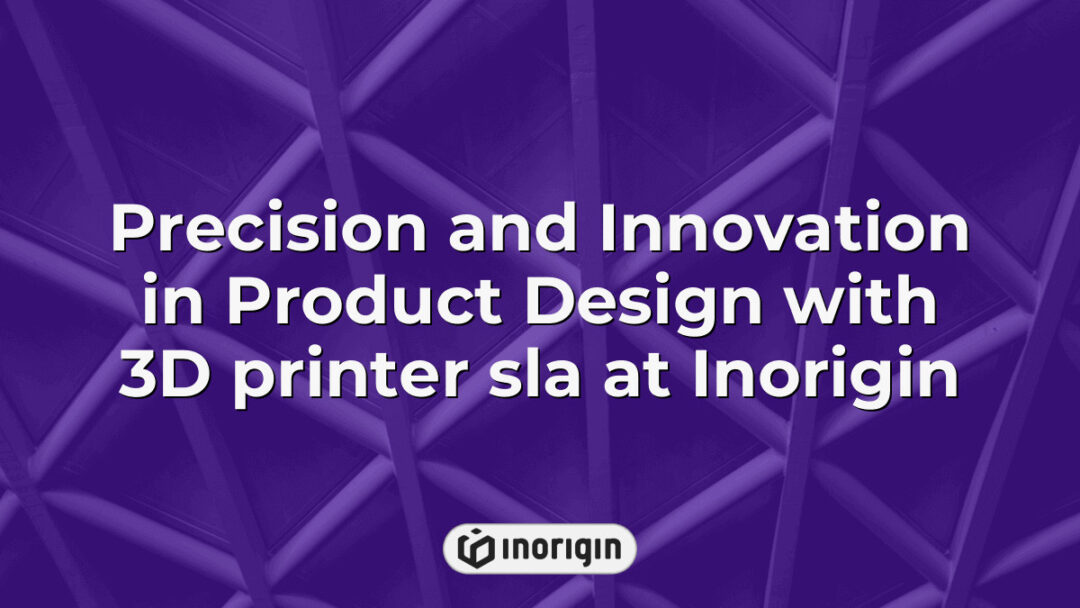In recent years, the 3D printing industry has experienced exponential growth, with the global market projected to reach a staggering $34.8 billion by 2024, reflecting an impressive compound annual growth rate of 26.4% from 2019 levels. This rapid expansion underscores the transformative impact that additive manufacturing technologies are having across various sectors, including aerospace, healthcare, and consumer goods. As organizations increasingly seek innovative solutions for production efficiency and customization capabilities, the role of leading 3D printer companies becomes paramount in shaping this dynamic landscape. Understanding the strategies employed by these key players not only highlights advancements in technology but also reveals broader implications for economic development and sustainability within modern manufacturing practices.
| Aspect | Key Takeaway |
|---|---|
| Market Growth and Importance of 3D printer companies | 3D printer companies are crucial drivers in a rapidly growing industry projected to reach $34.8 billion by 2024, fueling innovation across aerospace, healthcare, and consumer goods sectors. |
| Leading Industry Players | Top companies such as Stratasys, HP, and MakerBot shape the market by advancing printing technologies and setting high standards for quality and efficiency. |
| Variety of Printer Technologies | Different 3D printer types like FDM, SLA, and SLS serve specialized applications, ensuring solutions tailored for prototypes, precision parts, and durable industrial components. |
| Technological Innovations | Recent advancements in bioprinting, material science, and automation enhance production capabilities and enable collaboration across technical disciplines. |
| Consumer vs Industrial Market Focus | Consumer-focused companies such as Ultimaker and Creality prioritize accessibility and user experience, while industrial manufacturers innovate for high-performance and specialized applications. |
| Sustainability in 3D Printing | 3D printer companies integrate eco-friendly materials and waste reduction practices to reduce environmental impact, aligning with growing sustainability standards in manufacturing. |
| Maintenance and Operational Best Practices | Regular calibration, cleaning, and filament quality checks are essential for maintaining printer performance and ensuring consistent, reliable outputs. |
Overview Of The 3D Printing Industry
The 3D printing industry has experienced significant growth and transformation over the past decade, emerging as a pivotal force in various sectors such as manufacturing, healthcare, and education. Notably, the convergence of advanced technologies—such as additive manufacturing processes and digital design software—has facilitated unprecedented opportunities for innovation. Furthermore, the democratization of 3D printing technology has enabled small businesses and individuals to engage in production previously reserved for large corporations. As companies like Stratasys and Materialise continue to refine their offerings, attention is drawn to the environmental implications of these practices; biodegradable materials are increasingly incorporated into product lines, emphasizing sustainability within this burgeoning field. Moreover, while challenges related to intellectual property rights persist, ongoing advancements promise to reshape traditional paradigms of production and consumption. Ultimately, the trajectory of the 3D printing industry underscores its potential not only as a technological marvel but also as a catalyst for economic change across diverse domains.
Key Players In The 3D Printer Market
The landscape of the 3D printer market is teeming with innovation and competition, akin to a bustling metropolis where numerous companies vie for dominance. This dynamic environment features several key players who significantly influence industry trends and advancements. Notably, three primary contenders stand out:
- Stratasys – Renowned for its versatile range of 3D printing solutions, Stratasys excels in both industrial applications and educational sectors.
- MakerBot – As a pioneer in consumer-grade 3D printers, MakerBot has made substantial contributions towards democratizing access to additive manufacturing technology.
- HP Inc. – With its Multi Jet Fusion technology, HP has revolutionized production capabilities by enabling faster and more cost-effective processes.
These organizations not only drive technological improvements but also shape customer expectations regarding quality, speed, and affordability in 3D printing solutions. Through their continuous pursuit of research and development, they facilitate a broader acceptance of additive manufacturing across various industries, thereby expanding the potential applications of this transformative technology. The ongoing rivalry among these significant entities underscores the rapid evolution within the sector while highlighting the importance of strategic innovation as a means to capture market share amidst growing competition.
Types Of 3D Printers And Their Applications
The landscape of 3D printing technology encompasses a variety of printer types, each designed to serve specific applications across numerous industries. Firstly, Fused Deposition Modeling (FDM) printers are widely recognized for their affordability and accessibility, making them suitable for prototyping as well as educational purposes. These printers work by extruding thermoplastic filaments layer by layer, which is particularly effective in producing functional prototypes and models. Conversely, Stereolithography (SLA) utilizes a laser to cure liquid resin into solid structures, providing high-resolution outputs that are essential in fields such as jewelry design and dental applications where precision is paramount. Furthermore, Selective Laser Sintering (SLS) employs a laser to fuse powdered materials—such as nylon or metal—allowing for the creation of complex geometries that are often utilized in aerospace and automotive sectors due to their strength and durability. Additionally, Binder Jetting stands out for its ability to produce full-color models through an inkjet print head that applies binder material onto layers of powder; this method finds extensive use in architectural modeling and artistic endeavors. Each type of 3D printer contributes uniquely to diverse industrial needs, highlighting the versatility and adaptability inherent within modern additive manufacturing techniques.
Innovations In 3D Printing Technology
The landscape of 3D printing technology resembles a rapidly flowing river, constantly evolving and adapting to new advancements. Recent innovations have propelled the industry forward, enhancing capabilities and expanding applications across various sectors. Three significant developments exemplify this progression: first, the emergence of bioprinting techniques has enabled the fabrication of complex biological structures, paving the way for potential breakthroughs in medical treatments; second, advancements in materials science have led to the creation of high-performance polymers and metals that improve durability and functionality for industrial applications; third, automation and artificial intelligence integration are streamlining production processes, thereby increasing efficiency and reducing human error. As these innovations continue to shape the future of 3D printing, they not only redefine manufacturing possibilities but also stimulate interdisciplinary collaboration among engineers, designers, and scientists. The ongoing pursuit of technological refinement underscores an enduring commitment to pushing boundaries within this dynamic field.
Leading Consumer 3D Printer Companies
In an era reminiscent of the industrial revolution, when machinery began to reshape production processes, consumer 3D printer companies are now similarly transforming manufacturing landscapes. Leading firms in this sector include names such as Ultimaker, Prusa Research, and Creality, each contributing distinct innovations that cater to a broad range of users—from hobbyists to professionals. For instance, Ultimaker is recognized for its commitment to high-quality printers designed for both ease of use and precision, which appeals particularly to educational institutions and small businesses alike. Transitioning from conventional methods, Prusa Research has made significant strides with open-source designs that foster community-driven enhancements while maintaining affordability. Furthermore, Creality has gained considerable popularity due to its extensive lineup of budget-friendly options without compromising on performance capabilities. Collectively, these companies not only enhance accessibility but also drive advancements in materials and applications within the field of additive manufacturing.
Prominent Industrial 3D Printer Manufacturers
The landscape of industrial 3D printer manufacturers resembles a vast, intricate ecosystem where each entity plays a vital role in the advancement of additive manufacturing technology. Prominent players such as Stratasys, EOS, and Siemens have established themselves by continuously innovating their products to meet the demands of various sectors, including aerospace, automotive, and healthcare. For instance, Stratasys has focused on developing polyjet and fused deposition modeling technologies that enhance precision and material diversity. Furthermore, EOS stands out with its expertise in metal laser sintering processes, catering specifically to industries requiring high-performance materials capable of enduring extreme conditions. In addition to these established firms, emerging companies are also making significant strides; for example, Markforged is gaining recognition for its unique composite printing capabilities that allow for lightweight yet strong components. Consequently, this dynamic environment not only fosters competition but also stimulates advancements that drive further applications of 3D printing across diverse fields. The continual evolution within this industry highlights a commitment to pushing technological boundaries while addressing real-world challenges faced by manufacturers today.
Comparison Of 3D Printer Brands And Models
What differentiates one 3D printer brand from another, and how do various models cater to specific needs within the industry? The comparison of 3D printer brands and models reveals a landscape characterized by diverse capabilities, technological innovations, and targeted applications. For instance, manufacturers such as Stratasys and EOS are renowned for their high-end industrial solutions that prioritize precision and material versatility; however, they may also come with significantly higher price points compared to entry-level options from companies like Creality or Anycubic. Furthermore, while some brands focus on additive manufacturing techniques suited for rapid prototyping—such as Fused Deposition Modeling (FDM) others offer Selective Laser Sintering (SLS) technologies ideal for producing complex geometries with durable materials. Additionally, user-friendliness is an essential factor in this comparative analysis; certain models provide intuitive interfaces catering to novice users, whereas advanced systems demand extensive technical knowledge but yield superior results in professional settings. Ultimately, understanding these distinctions enables stakeholders to make informed decisions tailored to their operational requirements and budget constraints.
The Role Of Startups In Advancing 3D Printing
The landscape of 3D printing has significantly transformed, akin to a technological renaissance where innovation blooms in the crucible of entrepreneurship. Startups play an indispensable role in this evolution by fostering creativity and introducing novel solutions that challenge established norms within an industry often dominated by well-established corporations. By leveraging agile methodologies and capitalizing on emerging technologies, these enterprises contribute to advancements such as enhanced print speeds, improved materials science, and accessibility of 3D printing for diverse applications ranging from medical implants to sustainable construction practices. Furthermore, their ability to pivot quickly in response to market demands positions them as vital players capable of pushing boundaries.
Key contributions of startups in advancing 3D printing include:
- Innovative Materials Development: The introduction of new filament types and composite materials enables more versatile applications.
- User-Centric Design: Many startups focus on creating intuitive interfaces and user experiences that democratize access to 3D printing technology.
- Sustainability Initiatives: A growing number prioritize eco-friendly practices, developing biodegradable materials or recycling programs for waste reduction.
Through these efforts, startups not only drive technical progress but also inspire a culture of experimentation and collaboration within the broader ecosystem of additive manufacturing. This dynamic interplay ultimately enhances the capabilities and societal implications of 3D printing technology, thereby shaping its trajectory for future development.
Environmental Impact And Sustainability Efforts
The environmental impact and sustainability efforts associated with 3D printing technologies present a compelling area of inquiry, particularly in light of contemporary concerns regarding ecological degradation. As industries increasingly adopt additive manufacturing processes, questions arise about the long-term implications for resource consumption and waste generation. Notably, while traditional manufacturing often results in significant material waste due to subtractive techniques, 3D printing can minimize such losses through layer-by-layer fabrication methods. However, this potential benefit must be weighed against the energy-intensive nature of certain printing materials and processes. Furthermore, as companies strive for greater sustainability, initiatives such as utilizing bio-based filaments and recycling programs are gaining traction within the sector. These advancements reflect a growing recognition that addressing environmental challenges is not merely an ethical imperative but also a crucial component of competitive strategy in an evolving marketplace.
TIP: To enhance sustainability efforts further, stakeholders may consider adopting lifecycle assessment methodologies to comprehensively evaluate the environmental footprint of various 3D printing practices and materials throughout their entire production cycle.
Future Trends In 3D Printing And Company Strategies
The future of 3D printing is often perceived through the lens of rapid technological advancement and its potential to revolutionize various industries; however, this perspective warrants a critical examination. Emerging trends indicate that companies are increasingly focusing on integrating artificial intelligence (AI) and machine learning into their production processes, which enhances efficiency and precision. Additionally, there is a significant shift towards bioprinting in the medical field, where customized tissue and organ models can potentially address pressing healthcare challenges. Furthermore, sustainability has become a central tenet in corporate strategies as firms strive to reduce waste and improve energy consumption associated with additive manufacturing practices. As these developments unfold, it becomes evident that collaboration among stakeholders—ranging from material suppliers to end-users—is essential for fostering innovation and addressing regulatory concerns within the sector. This multifaceted approach not only reflects an adaptation to market demands but also underscores the importance of strategic foresight in navigating the complexities inherent in the evolving landscape of 3D printing technology.
Frequently Asked Questions
What Are The Common Maintenance Requirements For 3D Printers?
The maintenance of 3D printers is often viewed as a crucial aspect that can significantly influence the longevity and performance of these devices. To begin with, regular cleaning of the printer’s components—such as the print bed, nozzle, and extruder—is essential for preventing material buildup and ensuring optimal printing conditions. Additionally, monitoring the calibration settings plays a pivotal role in achieving accurate dimensions in printed objects; improper calibration can lead to warping or misalignment during prints. Furthermore, routine checks of moving parts are necessary to ensure smooth operation and minimize wear over time; lubrication may be required to maintain functionality. The inspection of filament quality cannot be overlooked either, as contaminants or moisture can adversely affect print quality and reliability. Ultimately, adhering to these common maintenance requirements not only enhances the operational efficiency of 3D printers but also extends their service life, thereby providing users with reliable results while mitigating potential issues associated with neglect.
This Question Delves Into The Practical Aspects Of Owning And Operating A 3D Printer, Which May Not Be Covered In The Broader Industry Or Company-focused Sections.
The practical aspects of owning and operating a 3D printer encompass various considerations that extend beyond the overarching themes typically discussed within industry analyses. Initially, one must address the selection of appropriate materials, as different types of filament can significantly influence both the quality of the final product and the operational efficiency of the device. Furthermore, users are required to acquire proficiency in software applications necessary for model design and printing preparation; this includes understanding slicing software which converts 3D models into instructions comprehensible by printers. Additionally, maintenance practices play a crucial role in ensuring consistent performance; regular calibration and cleaning routines help mitigate issues such as clogging or improper adhesion during print jobs. Moreover, it is essential to consider safety protocols associated with 3D printing, particularly regarding ventilation when using certain filaments that may emit harmful fumes.
For those engaged in 3D printing endeavors, it is advisable to maintain a well-organized workspace dedicated solely to printing activities. This approach not only enhances productivity but also minimizes potential hazards associated with material handling and equipment operation.
Conclusion
The landscape of 3D printing continues to evolve, driven by innovative technologies and diverse applications. As established manufacturers and dynamic startups collaborate, the industry resembles a vibrant tapestry woven with creativity and precision, promising advancements that will shape manufacturing processes and consumer experiences for years to come.
Related posts:
- Precision Engineering Breakthroughs With an Industrial 3D Printer at Inorigin
- Industrial 3D Printers Revolutionizing Manufacturing with Advanced Materials and Precision Engineering
- Product Engineering Services Companies Driving Innovation Through Precision Design and Advanced Prototyping
- How Can Industrial Design Impact Your Product’s Market Success in Shaping Consumer Appeal and Brand Differentiation
- How Product Design Engineering Companies Integrate Advanced Technology with Creative Innovation
- Engineered Products a Paper Company Integrates for Sustainable Manufacturing Excellence




